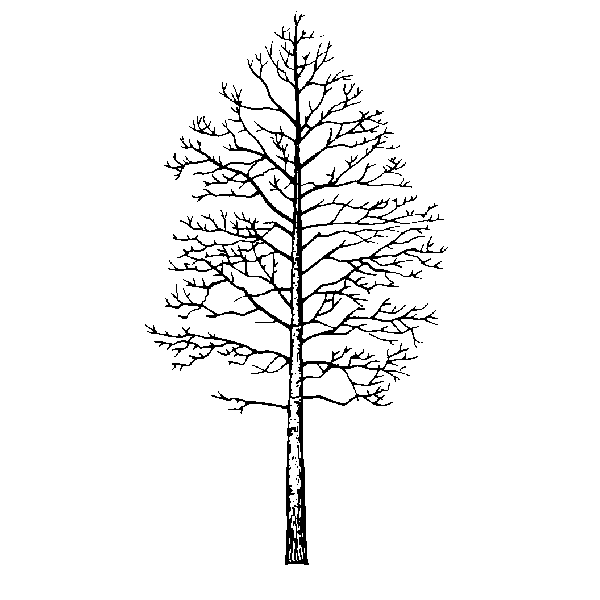Edition_02 Collaboration
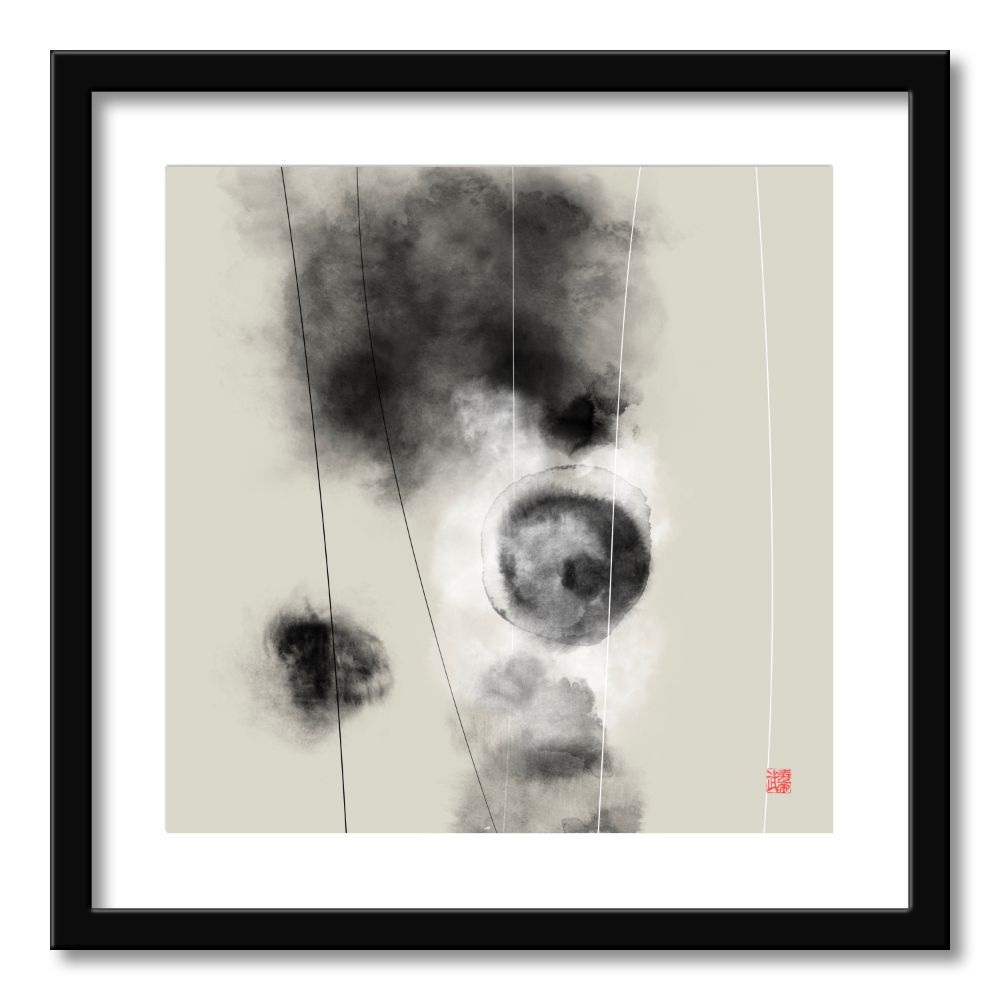
What is collaboration?
How about this for a definition for collaboration?
Oh, what an ending!
I feel like a tremendous clown is destroying my life in a mess.
I am being swept off this roller coaster of emotions right now and I am staring at me, crushed on the ground.
But at least for this here and now moment, I am in pain, and I don't know what the future holds.
Why is it so painful to trust people?
Original Japanese
ああ、何という結末でしょうか?
とてつもないピエロが私の人生をめちゃくちゃに破壊している気分です。
この感情のジェットコースターに、僕は今すぐ振り落とされて、地面で潰れている僕を、僕は見つめている。
ただ少なくとも今ここ瞬間は、僕は苦しい、そして未来のことはわからない。
人を信じることは、どうしてこれほどまでに苦しいのでしょうか?
I’ll get back to the snippet above, where it comes from and how I think it defines collaboration. But first, before we dive into what collaboration is, it might be worthwhile to talk about what it’s not.
I don't think collaboration means what you think it means.
Perhaps you are familiar with this now classic scene from Princess Bride
Vizzini: Inconceivable!
Iñigo Montoya: You keep using that word. I do not think it means what you think it means. (1)
Almost every time I hear someone use the word collaborate I silently play that scene in my mind, “You keep using that word. I don’t think it means what you think it means,” as I nod along and smile.
Below are a few of the unspoken meanings for collaboration that I’ve come across as an employee, a volunteer, a community builder, and collaborative art-maker:
In the following sentences imagine you hear the word (collaborate) being spoken, and [the words between the square brackets are what is actually meant].
- Just (collaborate!) [don’t ask questions, or tell me about problems, do the work without bothering me]
- Hey, let’s all (collaborate) [do unicorns and rainbows] together.
- We need to (collaborate) [do what I’ve already decided].
- Cross sector (collaboration!) [um…a thing, with stuff?…]
- Inter-departmental (collaboration!) [uh…more meetings?…]
- Bill, how about you (collaborate) [make shit up] with Margery on this one?
Let's Collaborate!
We often draw organizational charts like this:
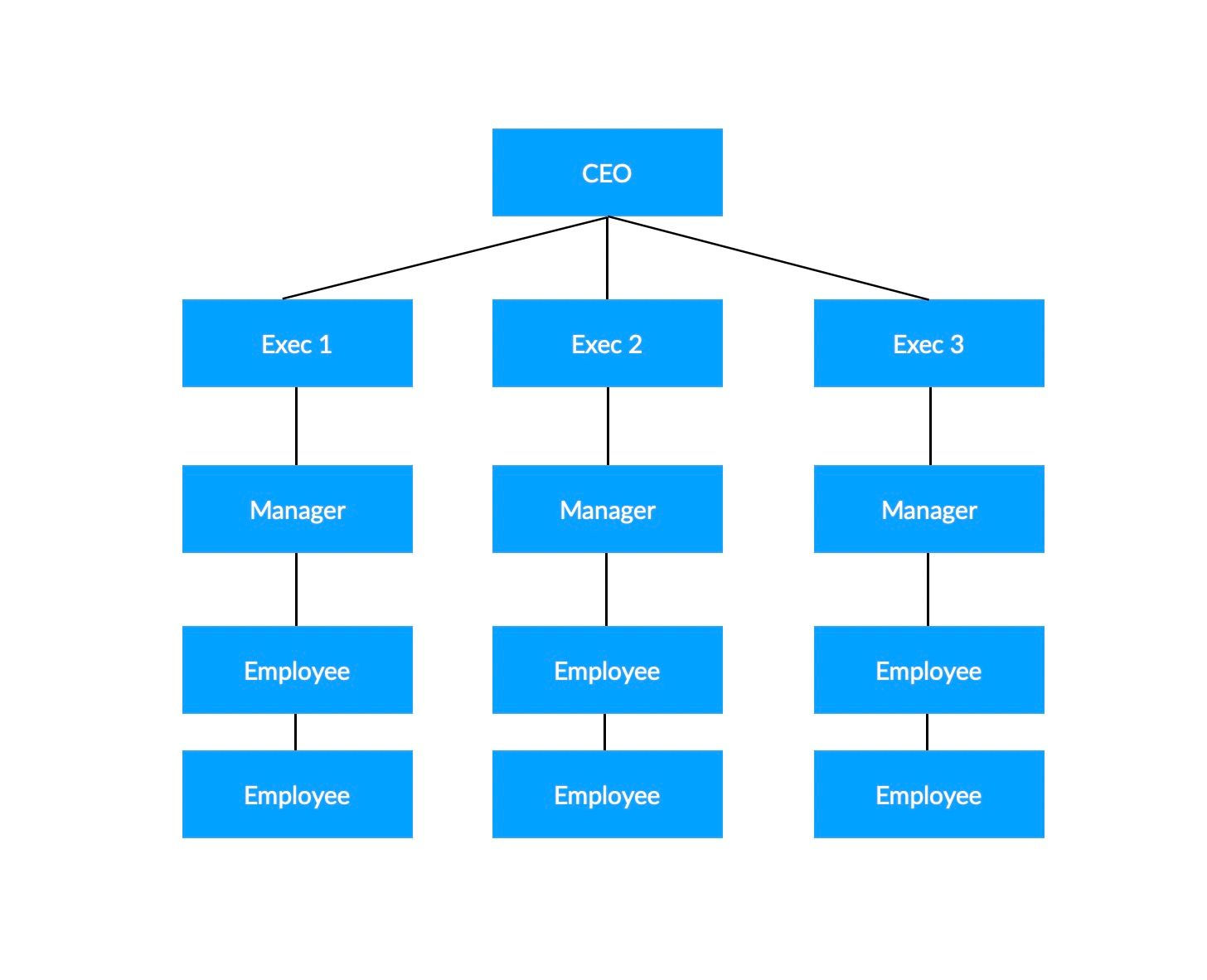
The little black lines are relationships between one person and another person. The unblemished clarity of charts and graphs, all perfect right angles and what not, brings its own implicit authority to visualized information. It must be true because it’s in this pretty, and perfect graph.
When we visually represent relationships by a line—and only one kind of line at that—we might unconsciously begin to believe that any one relationship is like any other relationship. We might confuse the map with the territory, in subtle and not readily apparent ways.
If the little-black-line-relationship between one person is like any other little-black-line-relationship between any other person, then to get more work done you just need more people and relationships! Let's collaborate!
There’s a perfectly straight little black line between between Bill and Margery, between departments, or between sectors. Isn’t it obvious how they should interact? Isn’t it obvious how they should collaborate!
No, it is not.
Because an employee isn’t just an employee, and a manager isn’t just a manager. A sector isn’t just a sector, A department isn’t just a department. They are all this employee, manager, sector and department. In all their complex and particular this-ness.
Bill and Margery aren’t just employees, they are humans. Giant hairballs of beautiful complexity and contradiction, in all their particular this-ness.
Again, it seems to obvious to state. And again, I’ve witnessed perfectly rational, grown adults in leadership roles, behave as though an employee is only an employee, as defined in an org chart, and a manager is only a manager, as defined in an org chart, and their relationship is as clear cut and simple as the little black line between the two boxes on the chart.
Here’s an alternative to the clean edges and lines of the charts and graphs.
Relationship as soil.
In this metaphor relationship isn’t a clean little line, it’s a context, an environment, a ground, a field. A field of possibility in which creative intention is transformed into embodied action.
Relationship is the soil from which everything grows.
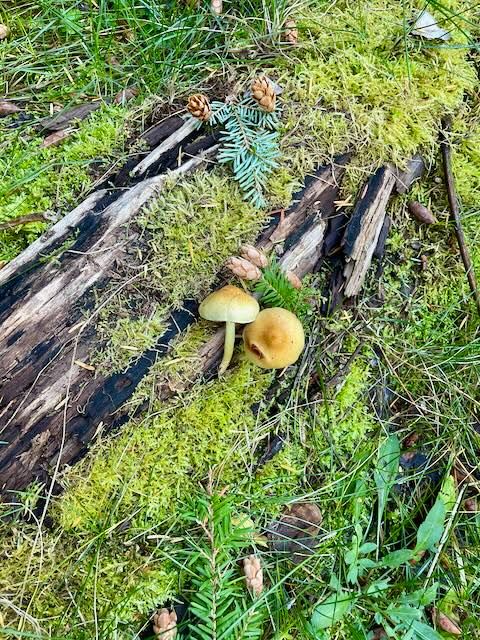
Soil, any farmer or gardener will remind you, is layers and layers of dead things. In this metaphor and within the realm of the arts, it’s layers and layers of dead hopes, dreams, aspirations, prototypes, tries, failures, attempts. No poem ever says what the poet hopes it will say. Every scale comes short, it is never perfect. Every performance doesn’t quite attain to what was possible.
All of that is the soil from which the next painting or performance will grow. For artists, everyday—day after day—means dying to and grieving the-thing-you-can’t-not-make, in order to wake up the next day and to try making it all over again. You never get where you are going. The journey is the destination.
For some artists, your relationship with yourself and your practice is the soil from which everthing grows. For collaborative artists, your relationship with yourself, your practice and your collaborators, and their practice, is the soil from which everything grows.
This is where soil is apt metaphor. Collaborative art making is redolent of soil, the relationship is unmistakably not neat and clean and tidy. It is an earthy humus alive with possibility, and it gets your hands dirty. This kind of possibility is not for everyone. It is decidedly for the sound of mind, and stout of heart.
If relationship is the soil from which everything grows, then collaboration is a particular kind of relationship, a particular kind of soil. And in this particular collaboration-as-soil metaphor, what does getting your hands dirty look like? Well, for one you get your hands dirty for the sake of what’s growing, not just to get your hands dirty. In a collaborative art-making context, that looks like having uncomfortable, even painful conversations, for the sake of the art you are making (growing) together.
At the beginning I said the poetry snippet defined collaboration, which isn’t quite true. Defined is to static and final. The snippet is a heuristic. It points our attention in the right direction.
It is an example of what the soil of collaboration is made of, and it isn’t definitive and final. As an example, it points to the depth at which collaborative relationships occur. It's an example of what the soil of collaboration is made of, in all it’s emotional range and poetic fullness, from one collaborator to another.
Here is the snippet again, with a bit more context:
[trust had been strained in a significant way]
Artist 1:
“I feel terrible and I am sorry.”
Artist 2:
ああ、何という結末でしょうか?
とてつもないピエロが私の人生をめちゃくちゃに破壊している気分です。
この感情のジェットコースターに、僕は今すぐ振り落とされて、地面で潰れている僕を、僕は見つめている。
ただ少なくとも今ここ瞬間は、僕は苦しい、そして未来のことはわからない。
Oh, what an ending!
I feel like a tremendous clown is destroying my life in a mess.
I am being swept off this roller coaster of emotions right now and I am staring at me, crushed on the ground.
But at least for this here and now moment, I am in pain, and I don't know what the future holds.
人を信じることは、どうしてこれほどまでに苦しいのでしょうか?
僕はもう誰も疑いたくないのに、恐らくこれは僕自身の問題なのです。少なくとも僕の人生には、幸せは道端には転がっていないようです。そしてそれは僕自身が原因なのです。僕の弱い心が、信じる心を抱きしめられない。
Why is it so painful to trust people?
Perhaps this is my own problem, even though I don't want to doubt anyone anymore. At least in my life, happiness does not seem to lie on the side of the road. And it is my own fault.
My weak mind cannot embrace the mind of belief.
ただ、あなたを信じるということ
ただ、あなたを信じるということ
僕は苦しみの業火に、この身が朽ち果てたとしても、ただ、あなたを信じ
僕は僕の決意を信じる、どちらに進んでも、結局は地獄なのだから
Just believing in You
Just to believe in you
Even if my body were to decay in the fire of suffering, I would still believe in you.
I believe in my determination, Whichever way I go, it's hell anyway.
Artist 3 (okay, it’s me. I’m Artist 3):
I’m glad we can hold space for strong emotions!
Artist 2, I can hear the intense pain and longing is your poems. (Those seem like poems to me)
Artist 1, I can hear your regret, that’s a painful thing to feel too.
I just happened to read this today:
With injustices and crises in every part of the world, many of us are asking ultimate questions about good and evil. “Where do the weeds come from? Where does evil originate? Why do people do such harmful things?” I ask this about a dozen times every day. This world doesn’t make sense. How can people be so malicious, so unkind, so uncaring? It’s like we don’t know how to care anymore, as though we don’t know how to access our own hearts, our own souls, and our own spirits.
We may have… been told to pull out the imperfect weeds and get rid of our faults. But since we really couldn’t get rid of them, we covered them up and pretended we didn’t have them. And that just doesn’t work.
Yet [there is way that is absolutely realistic] …something that was never said to me when I was a young person: “Let the weeds and the wheat both grow together.” Wow! That’s risky. I can’t pretend to logically understand it, although I know it allows me to be compassionate with myself. After all, I’m also a field of weeds and wheat, just like you are, and just like everything is. Everything is a mixed bag, a combination of good and bad. We are not all weeds, but we are not all wheat, either. We have to learn, even now, to accept and forgive this mixed bag of reality in ourselves and in everybody else. If we don’t, we normally become very angry people. Our world is filled with a lot of angry people because they cannot accept their own weeds.
To accept this teaching doesn’t mean we can say, “It’s okay to be selfish, violent, and evil.” It simply means that we have some realism about ourselves and each other. We have to name the weed as a weed. We can’t just pretend it’s all wheat, all good, because it isn’t. We’re not perfect. ~ Richard Rohr
I don’t think any one of us is intentionally doing “harmful things.” I think all three of us are good people, trying to do good in the world. And all three of us are fucked up, just like everyone else on the planet.
Admitting I’m fucked up doesn’t mean I can just ignore the impact I’m having on others. We need to be able to draw boundaries around what is safe and healthy for ourselves, and do what is best for our artistic intentions.
And, as long as someone isn’t a) being intentionally harmful, or b) not willing to look at the ways they negatively impact those around them; and as long as they are a) intending good, and b) working on an awareness of the ways they negatively impact those around them so as to be a better version of themselves, well, I have all kinds of patience and compassion for that person, because that person is me too.
When I can have compassion for myself, for being a good person, who intends good, and who is also a mixed bag of good and bad, then I can have compassion for my friends who are the same.
I still feel the risk and pain of being hurt by people. And it’s alright to express that pain. (Which I’m not always so good at)
So, ultimately, I’m glad to stay with you Artist 1, and I’m glad to stay with you, Artist 2.
To me, this is what genuine friendship is. To be able to honestly ask, “Why is it so painful to trust people?” and to say “I feel terrible and I am sorry.” and in the end say:
“僕は苦しみの業火に、この身が朽ち果てたとしても、ただ、あなたを信じる
Even if my body were to decay in the fire of suffering, I would still believe in you.”
I’d rather be on a great team with genuine friends, than be on the greatest team in the world with people who aren’t honest with each other and don’t value each other.
Thank you both for your friendship, honesty and care.
Collaboration, in the context of collaborative art making, runs the full gamut of our humanity. From the simple pleasure of doing something meaningful with fellow human beings, to expressing our deepest doubt and pain.
Whatever happens next, nothing is lost. The joy, and pain, and pleasure, and doubt are soil for the next thing-we-can’t-not-make. A field of possibility, rich with human experience.
What if we could bring this richness into places of work?
What if box and stick org charts became a whimsical oddity of the past? What if places of work were fields of possibility, a place where we fostered relationships knowing they are the soil from which everything grows? What might we make together?
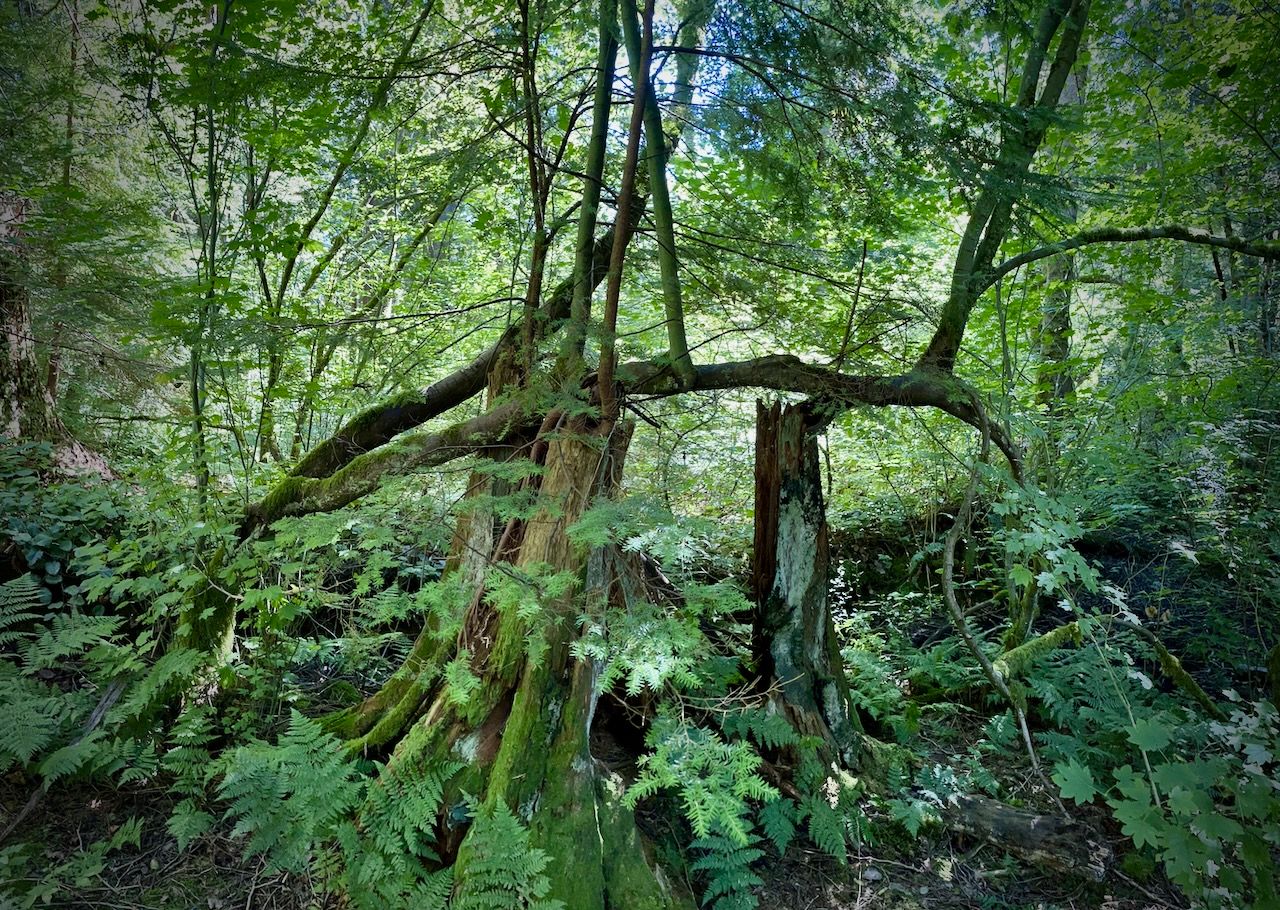
1. If you don’t know the scene, just fire up DuckDuckGo and search for “princess bride inconceivable” you’ll find a host of video clips capturing the moment.
